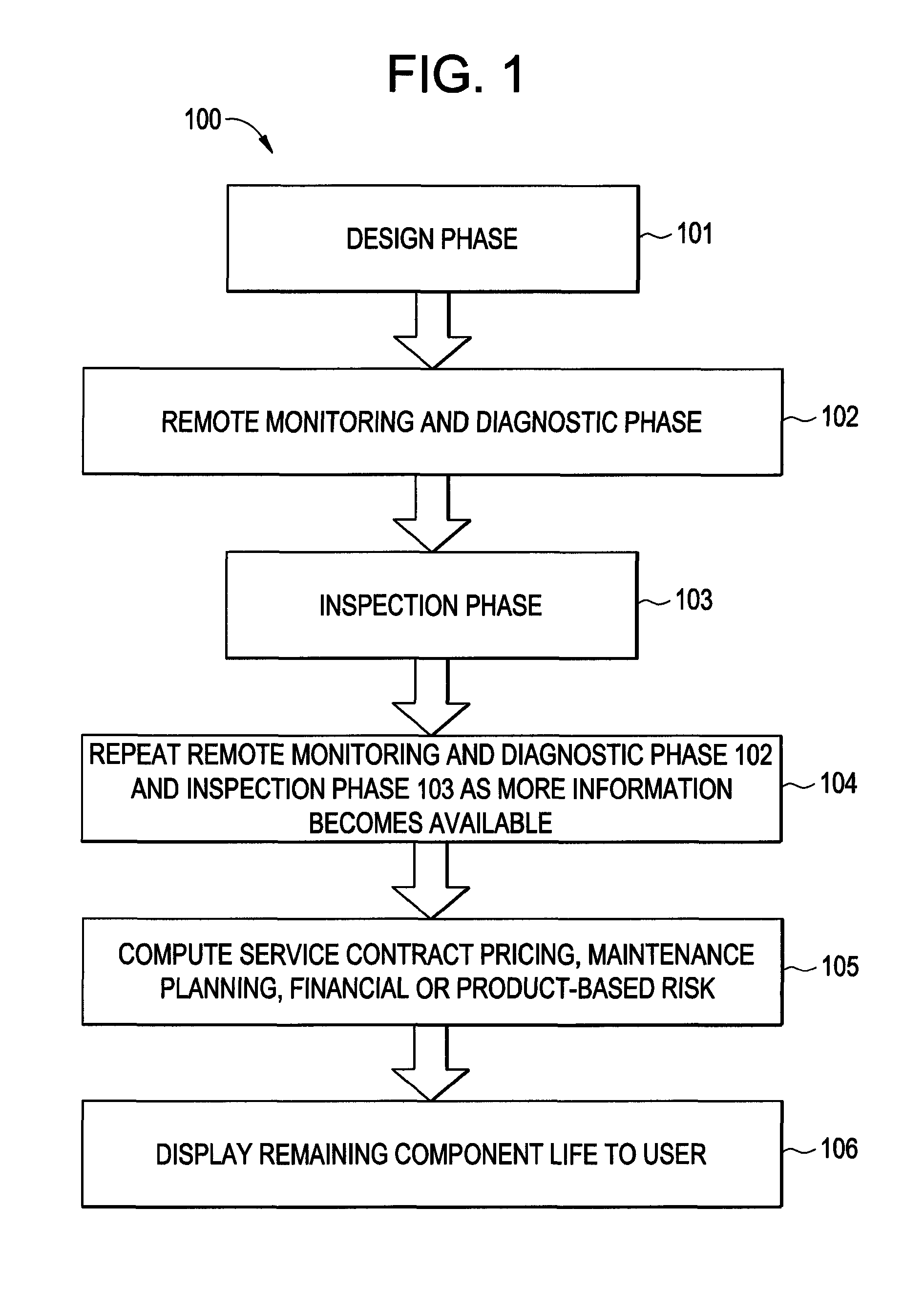Physics-based lifespan modeling
a technology of lifespan modeling and physics, applied in the direction of instruments, testing/monitoring control systems, process and machine control, etc., can solve the problems of reducing the ability of the manufacturer to accurately forecast the actual lifespan of the engine component, increasing the cost of the engine manufacturer, and reducing the availability of the engin
- Summary
- Abstract
- Description
- Claims
- Application Information
AI Technical Summary
Benefits of technology
Problems solved by technology
Method used
Image
Examples
Embodiment Construction
[0015]Lack of agreement between the predicted lifespan of turbine engine components and actual lifespan observed in field operation diminishes the ability of a manufacturer to accurately forecast the lifespan of engine components. Disagreement between design predictions and field data may occur in three scenarios. Design predictions, when they are manipulated probabilistically, may match the observed average behavior of the field data, but not the variation. Alternatively, the probabilistic design predictions may match the field variation, but not the average. Lastly, neither the average nor variation may match the probabilistic design prediction.
[0016]These mismatches may be due to insufficient physics simulations, or models, of critical variable variations from specific engine operation histories. Design computations and field data each explain some portion of the average lifespan and variation of a component. Through modeling that combines an existing or improved design model in ...
PUM
 Login to View More
Login to View More Abstract
Description
Claims
Application Information
 Login to View More
Login to View More - R&D
- Intellectual Property
- Life Sciences
- Materials
- Tech Scout
- Unparalleled Data Quality
- Higher Quality Content
- 60% Fewer Hallucinations
Browse by: Latest US Patents, China's latest patents, Technical Efficacy Thesaurus, Application Domain, Technology Topic, Popular Technical Reports.
© 2025 PatSnap. All rights reserved.Legal|Privacy policy|Modern Slavery Act Transparency Statement|Sitemap|About US| Contact US: help@patsnap.com



